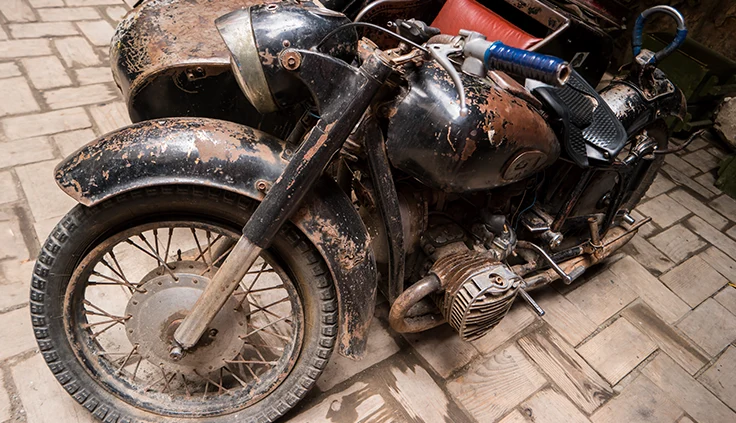Whether you’re selling your bike to a dealership, a private buyer, or via an online platform, having all the necessary documents in place is essential to make the transaction smooth, legal, and secure. In this guide, we’ll go over the critical paperwork required when selling a motorcycle for cash, providing you with a step-by-step process to avoid common pitfalls.
Why Proper Paperwork is Crucial?
When selling a motorcycle for cash, having the correct paperwork is vital not only for the transaction to be legal but also for the protection of both the buyer and seller. Proper documentation ensures that the transfer of ownership is completed correctly, and you can avoid potential future legal disputes. Additionally, it secures both parties’ interests and ensures the bike is sold without any unresolved issues.
Essential Paperwork When Selling a Motorcycle for Cash
The following documents are the primary requirements for selling a motorcycle for cash. Having them ready will streamline the transaction process and provide peace of mind for both you and the buyer.
1. Motorcycle Title (Ownership Certificate)
The most crucial document you’ll need when selling a motorcycle is the motorcycle title. This title proves that you own the bike and allows you to transfer ownership to the buyer. The title typically includes the bike’s make, model, year, VIN (Vehicle Identification Number), and the seller’s details.
If the title is free of liens (i.e., there’s no outstanding loan on the bike), you can simply sign it over to the buyer. If there is a lien, you’ll need to contact the lender to arrange for the lien to be cleared before the sale can proceed.
2. Bill of Sale
A bill of sale is a legal document that records the terms of the sale and helps protect both parties involved. This document typically lists the buyer and seller’s names and addresses, the motorcycle’s details (including VIN), the sale price, and the date of the transaction.
While not always required, a bill of sale serves as proof of the transaction and can be helpful for both the seller and the buyer in case of future disputes. It can also serve as a receipt of payment and a record for tax purposes.
3. Release of Liability (Roli)
In some states, sellers are required to submit a Release of Liability (Roli) form to the Department of Motor Vehicles (DMV) once the motorcycle is sold. This form notifies the DMV that you no longer own the vehicle and are no longer liable for its use. The Roli form will ask for the bike’s VIN, the buyer’s details, and the date of the transaction.
This document ensures you are not held responsible for any legal issues or accidents involving the bike after the sale.
4. Motorcycle Registration
While the title proves ownership, the registration serves as proof that the motorcycle is legally registered with the DMV. Depending on the state, the buyer may need to have the registration document in order to complete the transfer of ownership. The registration includes the bike’s details, such as its VIN, make, and model, and may list the expiration date of the registration.
Ensure the registration is valid and up-to-date. If it’s expired, you may need to renew it before the sale, especially if you’re selling in a state where this is required.
5. Proof of Identification
As with any legal transaction, you must prove your identity when selling a motorcycle. A government-issued ID, such as a driver’s license or passport, will be necessary to verify your identity. Make sure your ID is current and hasn’t expired. The buyer may also ask for a copy for their records, which is entirely normal.
This verifies that you are the rightful owner of the bike and are authorized to sell it.
6. Payment and Receipts
When selling a motorcycle for cash, it’s essential to ensure payment is made securely and properly documented. Whether you’re accepting cash, a certified check, or a bank transfer, documenting the transaction is important for both parties. A receipt should acknowledge the full payment amount, including the date, buyer and seller information, and the motorcycle’s details.
The receipt serves as proof that the transaction took place, protecting both the buyer and seller in case of disputes.
Additional Paperwork to Consider
Depending on the state and circumstances, you may need to provide additional paperwork to complete the sale.
Smog Certificate/Emissions Test
Some states require a smog certificate or emissions test before selling a motorcycle. This ensures the bike complies with environmental regulations. Without a valid emissions test, the transaction may not be valid in certain regions, and the buyer may be unable to register the bike.
Warranty Papers or Service Records
If your motorcycle is under warranty or has a detailed service history, it’s helpful to provide the buyer with any relevant documents. Service records can reassure the buyer about the motorcycle’s condition and any warranty coverage that may still apply.
The Process of Selling a Motorcycle for Cash
To sell your motorcycle for cash successfully, follow these steps:
- Prepare Your Motorcycle: Clean your bike thoroughly and ensure it’s running smoothly. A well-maintained bike attracts more buyers and higher offers.
- Set a Price: Research the market to find comparable bikes. Set a competitive price based on the bike’s condition, mileage, and demand.
- Advertise the Sale: List your motorcycle on local classified ads, popular online marketplaces, and visit nearby dealerships to attract potential buyers.
- Meet with Potential Buyers: Be ready to answer questions about the bike’s condition, history, and features. Offering test rides builds buyer trust.
- Finalize the Sale: Complete the necessary paperwork, confirm the payment, and officially transfer ownership to ensure a legal and smooth transaction.
Conclusion
Selling a motorcycle for cash can be a seamless process when you have all the right paperwork in place. By ensuring that you have the title, bill of sale, registration, and other key documents, you can avoid potential issues down the road. Always check your state’s specific requirements and keep all records of the transaction for future reference.
At The Bike Buyers, we make the process simple, transparent, and hassle-free, ensuring that you get the best deal for your motorcycle. Ready to sell your motorcycle? Contact The Bike Buyers today for a fast, fair cash offer!
FAQs
What if I still owe money on the motorcycle?
If you have an outstanding loan on your motorcycle, the sale process becomes more complicated. You will need to contact your lender to pay off the loan and obtain a lien release. Once the lien is cleared, you can transfer the title to the buyer.
How can I determine a fair price for my motorcycle?
To determine a fair price, research online marketplaces, local dealerships, and similar bikes in your area. Consider your bike’s make, model, age, condition, mileage, and any custom modifications. Use tools like Kelley Blue Book or NADA Guides to get a reliable estimate.
Can I sell my motorcycle to a dealership for cash?
Yes, many dealerships purchase motorcycles for cash. They may offer a lower price than a private sale but can provide a quick, hassle-free transaction.
How should I handle payment when selling my motorcycle?
For security, it’s recommended to accept payment through a bank transfer or certified check. While cash is an option, it is less secure.
Can I sell my motorcycle if it’s not in perfect condition?
Yes, you can sell your motorcycle even if it’s not in perfect condition. Be transparent about the bike’s flaws and price it accordingly.
How long does it take to sell a motorcycle for cash?
The time it takes to sell your motorcycle depends on factors like demand, price, and the selling platform. If priced well and marketed effectively, your bike could sell within a week or two.
What should I do if I sell my motorcycle and the buyer doesn’t register it?
If you’ve sold your motorcycle and the buyer fails to register it, you should submit a release of liability form to the DMV (if applicable in your state) as soon as the sale is complete. This will protect you from any future liabilities or legal issues.




